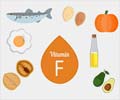Types of pasteurizations
Continuous Method
Pressure Differential
For continuous pasteurizing, it is important to maintain a higher pressure on the pasteurized side of the heat exchanger.
By keeping the pasteurized milk at least 1 psi higher than raw milk in regenerator, it prevents contamination of pasteurized milk with raw milk in event that a pin-hole leak develops in thin stainless steel plates.
This pressure differential is maintained using a timing pump in simple systems, and differential pressure controllers and back pressure flow regulators at the chilled pasteurization outlet in more complex systems. The position of the timing pump is crucial so that there is suction on the raw regenerator side and pushes milk under pressure through pasteurized regenerator. There are several other factors involved in maintaining the pressure differential:
The balance tank overflow level must be less than the level of lowest milk passage in the regenerator
Properly installed booster pump is all that is permitted between balance tank and raw regenerator
No pump after pasteurized milk outlet to vacuum breaker
There must be greater than a 12 inch vertical rise to the vacuum breaker
The raw regenerator drains freely to balance tank at shut-down









